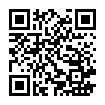Риски цифровизации: систематизация научного поля
Научная статья
Аннотация
Литература
2. Вартанова Е.Л., Гладкова А.А. Цифровое неравенство, цифровой капитал, цифровая включенность: динамика теоретических подходов и политических решений // Вестник Московского университета. Серия 10. Журналистика. 2021. № 1. C. 3–29. DOI: 10.17323/1811-038X-2022-31-2-51-74 EDN: LMITQU
3. Волченко О.В. Динамика цифрового неравенства в России // Мониторинг общественного мнения: Экономические и социальные перемены. 2016. № 5. С. 163–182. DOI: 10.14515/monitoring.2016.5.10 EDN: YFOSRV
4. Груздева М.А. Включенность населения в цифровое пространство: глобальные тренды и неравенство российских регионов // Экономические и социальные перемены: факты, тенденции, прогноз. 2020. Т. 13. №. 5. С. 90–104. DOI: 10.15838/esc.2020.5.71.5 EDN: GSPBDZ
5. Корытникова Н.В. Интернет-зависимость и депривация в результате виртуальных взаимодействий // Социологические исследования. 2010. № 6. C. 70–79. EDN: MNKOAZ
6. Цой Н. Феномен интернет-зависимости и одиночества // Социологические исследования. 2011. № 12. C. 98–107. EDN: ONGKGP
7. Abbate J. Getting Small: A Short History of the Personal Computer. Proceedings of the IEEE. 1999. Vol. 87. No. 9. P. 1695–1698. DOI: 10.1109/5.784256
8. Au-Yeung T.C., Qiu J. Institutions, Occupations and Connectivity: The Embeddedness of Gig Work and Platform-Mediated Labour Market in Hong Kong. Critical Sociology. 2022. Vol. 48. No. 7–8. P. 1169–1187. DOI: 10.1177/08969205221090581
9. Cook D. The Freedom Trap: Digital Nomads and the Use of Disciplining Practices to Manage Work/Leisure Boundaries. Information Technology & Tourism. 2020. Vol. 22. No. 3. P. 355–390. DOI: 10.1007/s40558-020-00172-4
10. Cotton S.R., Anderson W.A., McCullough B.M. Impact of Internet Use on Loneliness and Contact with Others among Older Adults: Cross-Sectional Analysis. Journal of Medical Internet Research. 2013. Vol. 15. Iss. 2. DOI: 10.2196/jmir.2306
11. Dunn M. Making Gigs Work: Digital Platforms, Job Quality and Worker Motivations. New Technol Work Employ. 2020. Vol. 35. No. 2. P. 232–249. DOI: 10.1111/ntwe.12167
12. Dutton W.H., Rogers E.M., Jun S.-H. Diffusion and Social Impacts of Personal Computers. Communication Research. 1987. Vol. 14. No. 2. P. 219–250. DOI: 10.1177/009365087014002005
13. Ewald F. Insurance and Risk. The Foucault Effect: Studies in Governmentality: With Two Lectures by and an Interview with Michel Foucault. Ed. by M. Foucault, et al. Chicago: University of Chicago Press, 1991. P. 197–210.
14. Gershuny J. Web Use and Net Nerds: A Neofunctionalist Analysis of the Impact of Information Technology in the Horne. Social Forces. 2003. Vol. 82. No. 1. P. 141–168. DOI: 10.1353/sof.2003.0086
15. Gimpel H., Schmied F. Risks and Side Effects of Digitalization: A Multi-Level Taxonomy of The Adverse Effects of Using Digital Technologies and Media. Proceedings of the 27th European Conference on Information Systems (ECIS), Stockholm & Uppsala, Sweden, June 8–14, 2019. Accessed 01.02.2025. URL: https://www.wi.uni-bayreuth.de/pool/Dokumente/ECIS_Risks-and-Side-Effects-of-Digitalization.pdf
16. Kim S. The Diffusion of the Internet: Trend and Causes. Social Science Research. 2011. Vol. 40. No. 2. P. 602–613. DOI: 10.1016/j.ssresearch.2010.07.005
17. Kim W., Ok-Ran J., Chulyun K., et al. The Dark Side of the Internet: Attacks, Costs and Responses. Information Systems. 2011. Vol. 36. P. 675–705. DOI: 10.1016/j.is.2010.11.003
18. Krippendorff K. Content Analysis: An Introduction to its Methodology. 4th ed. Los Angeles: SAGE, 2018. 451 p. DOI: 10.4135/9781071878781
19. Lupton D. Risk and Sociocultural Theory: New Directions and Perspectives. Cambridge: Cambridge University Press, 1999. 204 p. DOI: 10.1017/CBO9780511520778
20. Meng S.-Q., Cheng J.-L., Li Y.-Y., et. al. Global Prevalence of Digital Addiction in General Population: A Systematic Review and Meta-Analysis. Clinical Psychology Review. 2022. Vol. 92. Publication No. 102128. DOI: 10.1016/j.cpr.2022.102128
21. Pirkkalainen R., Salo M. Two Decades of the Dark Side in the Information Systems Basket: Suggesting Five Areas for Future Research. Proceedings of The 24th European Conference on Information Systems. Tel Aviv, Israel, June 9–11, 2014. European Conference on Information Systems. Article 101. Accessed 01.02.2025. URL: http://aisel.aisnet.org/ecis2016_rp/101
22. Rizk J., Hillier C. Digital Technology and Increasing Engagement among Students with Disabilities: Interaction Rituals and Digital Capital. Computers and Education Open. 2022. Vol. 3. Publication No. 100099. DOI: 10.1016/j.caeo.2022.100099
23. Tarafdar M., Pullins E.B., Ragu‐Nathan T.S. Technostress: Negative Effect on Performance and Possible Mitigations. Information Systems Journal. 2015. Vol. 25. No. 2. P. 103–132. DOI: 10.1111/isj.12042
24. Timmermans S., Kaufman R. Technologies and Health Inequities. Annual Review of Sociology. 2020. Vol. 46. No. 1. P. 583–602. DOI: 10.1146/annurev-soc-121919-054802
25. Whiting R., Symon G. Digi-Housekeeping: The Invisible Work of Flexibility. Work, Employment and Society. 2020. Vol. 34. No. 6. P. 1079–1096. DOI: 10.1177/0950017020916192
26. Young K.S. Caught in the Net: How to Recognize the Signs of Internet Addiction and a Winning Strategy for Recovery. N.-Y.: John Wiley & Sons, 1998. 274 p.

Поступила: 31.07.2024
Опубликована: 23.03.2025
Все права на статью принадлежат авторам. Авторы передают права на использование статьи, в том числе на использование статьи в открытом доступе, издателю журнала на условиях неисключительной лицензии (Авторское соглашение (публичная оферта))
Принятием условий этого договора автором считается передача им материалов в редакцию через официальный сайт журнала ("Отправить рукопись") или через электронную почту редакции.










